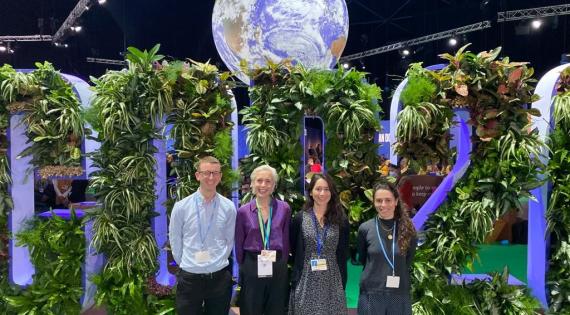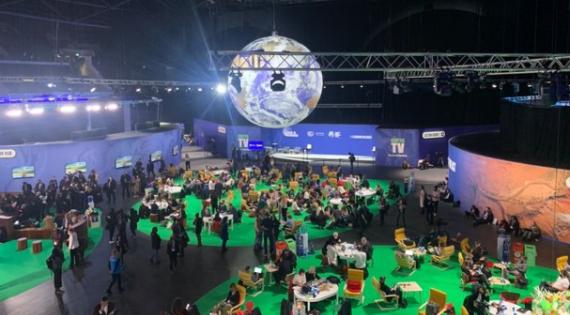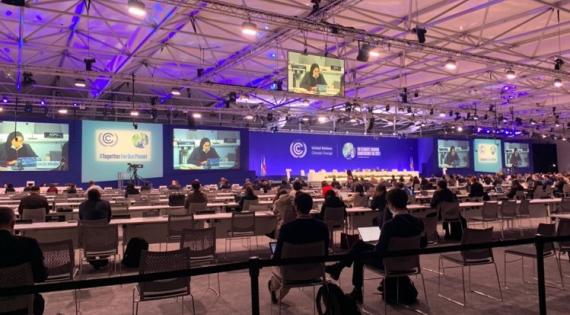Was COP26 really just ‘blah blah blah’? PhD candidate Galina Jönsson, who researches long-term biodiversity trends at UKCEH and the Natural History Museum, attended the climate summit as a member of Imperial College London’s COP26 delegation. Here, Galina discusses the importance of simultaneously tackling global biodiversity loss and climate change, and why she left COP26 with some hope intact...
When I started my PhD, I would’ve laughed at the thought of attending a UN summit. I wanted nothing to do with policymakers; I was researching real-world biodiversity, while policymakers were all talk and no real-world action. Yet, three years later, I found myself at the United Nation Framework Convention on Climate Change (UNFCCC) 26th Conference of the Parties (COP26) in Glasgow. So what changed?
Devastating extreme weather forced people and governments across the globe to recognise the threat of climate change to human lives and livelihoods. However, much less attention has been paid to human activities’ destructive impacts on biodiversity, which are now jeopardising ecosystems’ ability to provide the vital services our societies depend on, such as pollinating crops. When not a single Convention on Biological Diversity (CBD) target for 2020 was met, I was alarmed by the apparent lack of international mobilisation for nature.
It frustrates me that we have separate international conventions meant to independently tackle climate change and biodiversity loss, because they are in fact two sides of the same problem. Accelerating climate change puts additional pressure on already strained ecosystems, increasing the risk of species extinctions and ecosystem collapse. At the same time, biodiversity loss drives climate change since ecosystems can absorb and store, as well as emit, greenhouse gases. As an example, healthy peatlands can absorb carbon, while globally, degraded peatlands release 2-4% of all human emissions: that’s more than the entire aviation industry. I’m not saying we shouldn’t reduce air traffic (and tax it appropriately), I’m just asking that peatland protection and restoration are given the same priority as promising technological innovations such as green aircraft.
It frustrates me that we have separate international conventions meant to independently tackle climate change and biodiversity loss, because they are in fact two sides of the same problem.
Climate change and biodiversity are inherently linked and require joined-up approaches tackling both crises simultaneously. So, when I got the opportunity to attend COP26, I went for it, determined that any action against climate change that didn’t centre around nature was senseless.



